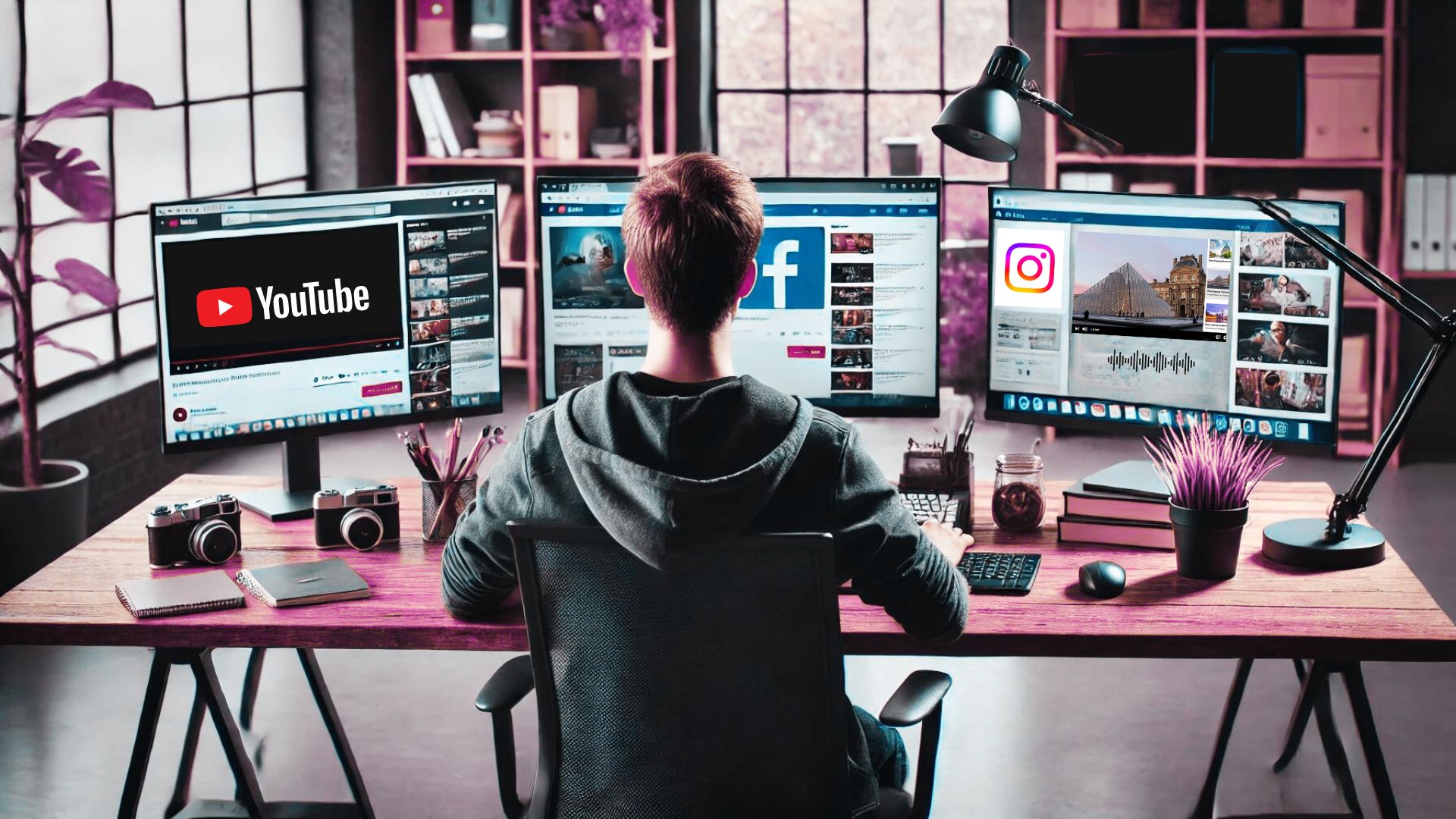On the road to success with video streaming

How live streaming and video on demand can make your business more successful
What is all the fuss about video on the Internet and on social media actually about? Well, good videos are magical. They have the unique ability to deliver complex messages in the shortest possible time. They attract attention, present brands, and highlight the benefits of products and services. They arouse positive emotions and generate sympathy. If you want to use the power of live streaming and video on demand to make companies more successful, this is the right place for you: Our blog post explains why videos are so popular on the Internet, what types there are and how they differ.
Why videos are so important
The attention span of online users has never been as short as it is today: Often, just a few seconds decide whether or not to stay on a website or social media channel. And those who leave often don't come back. Video content in the form of video on demand (VoD) or — for selected occasions — live streaming can change that. Why is the use of video in digital media so effective? Here are a few reasons:
Visual attractiveness: The eye is the most important sensory organ in humans. It is responsible for more than 75 percent of all daily perceptions. As a result, videos have a higher visual appeal than plain text. They are easier to consume because they appeal to the eye and ear. As a result, videos are better able to capture visitors' attention and keep them on the website longer than text, for example. This pays off: If you stay longer, you can be converted from prospect to customer more easily; the so-called conversion rate is statistically significantly higher on websites with video content than on websites without videos. This applies accordingly to social media.
Content delivery: Videos make it possible to convey information in a simple and immediately understandable way. Good for companies: They can present products, services or the company's values vividly. Particularly complex content and processes benefit from this. By using moving images, graphics, animations, spoken text and music, facts can be conveyed in an appealing, easy-to-understand and sustainable way. This makes it easier for viewers to absorb and retain the content. Product demonstrations and tutorials benefit in particular from this.
Emotional connection: Like no other form of content, moving images have the power to arouse emotions and build a strong connection with the viewer. By combining visual elements, music, voice and narration, videos can create a positive atmosphere and trigger the desired emotional response from the viewer. Emotional visual content attracts viewers' attention more than pure text and helps to establish a deeper connection to brand values and increase buying interest in products or services. This also increases the “virality” of contributions: Emotionally moving content increases word of mouth, as people tend to share and recommend videos that touch or inspire them with others.
Search engine optimization (SEO): Do you know the Google search engine algorithm? Neither do we. However, we know from studies that the inclusion of videos increases the chances of being placed on the first page of Google hits by 53 times. Appearing there is the goal of all SEO efforts — less than 10 percent of users make it to page 2 of the search results. The Google algorithm therefore prefers pages with videos. The integration of videos helps to improve Google rankings and generate more organic traffic. In addition, videos result in a longer stay in the respective medium, which in turn has a positive effect on SEO. Backlinks and social media integration, for example, can be used to further improve the visibility and authority of a website.
How can companies benefit from live streaming and video on demand?
We have now explained which factors make video websites and social media more attractive. The bottom line is that companies that use video grow their revenue 49% faster year over year than companies that don't use video. So when it comes to rapid growth, videos are the first choice. But what types of video integration actually exist, and how do they differ from one another?
Live streaming
Real-time interaction: Live streaming offers companies the opportunity to interact with their audience in real time, i.e. without time delay. Viewers can ask questions and make comments if they wish. This can lead to stronger ties with the company and a sense of community.
Event promotion: Companies can use live streaming to broadcast events, webcasts, product launches, or company announcements live. This allows them to reach a wider audience and increase the reach of their message.
Authenticity and transparency: Live streaming offers the opportunity to build an authentic and transparent image. Companies can provide insights into how they work and strengthen viewers' trust.
Video on demand (VoD):
Flexibility and availability: Video on demand allows users to watch videos anytime, anywhere, on their own schedule. Companies can provide training videos, product presentations, tutorials, or employee onboarding videos that users can access when needed.
Wider audience: By providing videos on demand, companies can reach a larger audience. Anyone who may not have had time to attend a live event can watch the content later thanks to VoD.
Analytics and tracking: Video-on-demand platforms often offer analytics tools that enable companies to gain detailed insights into viewer behavior. For example, it is possible to determine at any time how many people have just watched a video, watched it and for how long, and at what point they dropped out. This is important marketing information to better understand the needs and usage habits of the audience and to further optimize the video offering.
Overall, videos, whether through live streaming or video on demand, offer a diverse range of benefits for companies. They can strengthen brand presence, increase customer loyalty and make communication more effective.
What types of video are there?
Not every video is suitable for every purpose. Here are a few examples:
Explanatory videos: Provide a quick overview of complex topics. Because explanatory videos are often short (and should be), their system and storage requirements are low, increasing the number of potential target audiences.
Product presentations and tutorials: Present your company's products or services in an attractive way. With these videos, you will demonstrate their benefits and make them easier to use.
Company presentations: Show your target group who your company is and what makes it “tick.” Arouse interest in your company, its values, and the people behind the scenes.
Case studies, success stories, testimonials: Let the customer have their say Show real people and their experiences with your company. This builds trust and brings potential customers closer to a purchase decision.
Conclusion: Content matters
Last but not least: content, content! As with all content on companies' websites and social media channels, video content is also difficult to replace quality and professionalism in creative production as well as in the technical delivery of videos. Good videos represent professionalism and trustworthiness and create a positive basic feeling about the company and its offerings. On the other hand, inconsistencies in video content or technical errors with the streaming platform can be counterproductive to the purpose of video production.
We have shown what the magic and strength of videos on the Internet lie, how live streaming and video on demand differ from each other, and what the basic types of video content there are. Feel free to contact us if you have any further questions about your use case or the technical requirements of your streaming videos!
Newsletter
Abonnieren Sie unseren monatlichen Newsletter, um immer auf dem Laufenden zu bleiben!


